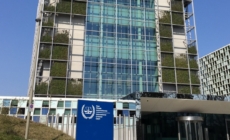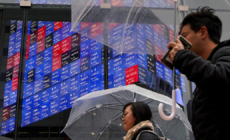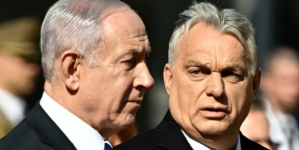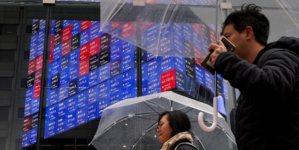-
Nebraska's Cale Jacobsen lays in and-one to extend lead against Georgetown - 2 mins ago
-
Viktor Orbán Receives Israeli Counterpart Benjamin Netanyahu - 6 mins ago
-
Netanyahu defies international arrest warrant on visit to Hungary - 16 mins ago
-
No bike lanes? Transit advocates say Metro ignores L.A. mobility plans - 39 mins ago
-
Hungary to Leave the International Criminal Court - 40 mins ago
-
US Bans Sex Between Personnel and Chinese Citizens in China: Report - 42 mins ago
-
Dodgers' Shohei Ohtani calls game, belts walk-off homer vs. Braves - 45 mins ago
-
‘Flipping 101’ star Tarek El Moussa’s transformation caused plastic surgery rumors - about 1 hour ago
-
Trump’s tariff bombardment sends global markets reeling - about 1 hour ago
-
Humanoid robot stuns with perfect side-flip acrobatics - about 1 hour ago
Taiwan denies Chinese strikes as Beijing ups live naval drills
China’s military held long-range, live-fire drills in the East China Sea on Wednesday in an escalation of exercises around Taiwan, saying it was practicing precision strikes on port and energy facilities, but Taiwan said none took place nearby.
The exercises follow a rise in Chinese rhetoric against Taiwan President Lai Ching-te, who China called a “parasite” on Tuesday, and come on the heels of U.S. Defense Secretary Pete Hegseth’s Asia visit, during which he repeatedly criticized Beijing.
China, which views democratically governed Taiwan as its own territory, has repeatedly denounced Lai as a “separatist.” Lai, who won election and took office last year, rejects Beijing’s sovereignty claims and says only Taiwan’s people can decide their future.
China’s Eastern Theater Command said that on Wednesday as part of the Strait Thunder-2025A exercise its ground forces had conducted long-range, live-fire drills into the waters of the East China Sea, though it did not give an exact location.
“The drills involve precision strikes on simulated targets of key ports and energy facilities, and have achieved desired effects,” it said, without elaborating.
Taiwan’s benchmark stock index. TWII briefly slipped into the red after the announcement, but closed up 0.1%.
China’s Maritime Safety Administration announced late Tuesday a closed zone for shipping due to military drills until Thursday night in an area off the north part of the eastern province of Zhejiang, more than 500 km (310 miles) from Taiwan.
A senior Taiwan defense official told Reuters that was outside its “response zone”, and Taiwan’s defense ministry said it had not detected any live fire drills around the island itself.
China’s military published a video it said was of the live fire drills that showed rockets, rather than ballistic missiles, being launched and hitting targets on land, and an animation of explosions over Taiwanese cities including Tainan, Hualien and Taichung, all home to military bases and ports.
The words “Control energy corridors, disrupt supply routes, block clandestine routes to docks” then appear on the screen.
The aircraft carrier Shandong also took part in drills, to the east of Taiwan, focused on integrated operations between naval and air forces and “multi-dimensional blockade and control,” China’s military said.
Taiwan’s defense ministry said it had detected so far on Wednesday 36 Chinese military aircraft, against 76 for the previous day, adding Taiwan had activated its own “rapid response exercise” for a second day saying it was needed to boost the alert level in case of a sudden Chinese move.
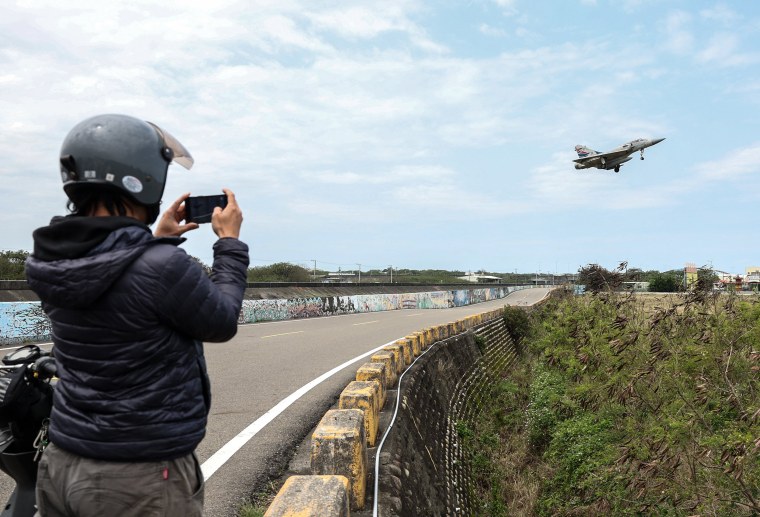
China had not formally named Tuesday’s drills. China called two rounds of major war games last year around the island Joint Sword-2024A and Joint Sword-2024B.
Chinese state television said Tuesday’s activities were not part of Strait Thunder-2025A, hence they did not have that name, and cited a military expert as saying this demonstrated the armed forces’ ability to adapt to rapidly evolving combat situations.
“No matter what the name is, it cannot cover up the naked provocative nature of the drills and their mentality of threatening Taiwan’s people,” Taiwan defense ministry spokesperson Sun Li-fang told reporters in Taipei.
China’s widely read Global Times said advanced equipment had been used, pointing to pictures from the military showing YJ-21 air-launched ballistic missiles slung under H-6K bombers.
The H-6K is an extended-range strike aircraft, while the YJ-21 is an advanced anti-ship weapon. H-6 aircraft, some of which are capable of carrying nuclear weapons, have been involved in past drills around Taiwan, and also spotted over the disputed South China Sea.
The United States, Taiwan’s most important international backer and main arms supplier despite the lack of formal diplomatic ties, condemned the exercises.
“Once again, China’s aggressive military activities and rhetoric toward Taiwan only serve to exacerbate tensions and put the region’s security and the world’s prosperity at risk,” the U.S. State Department said in a statement.
“The EU has a direct interest in the preservation of the status quo in the Taiwan Strait. We oppose any unilateral actions that change the status quo by force or coercion,” an EU spokesperson said.
Speaking in Beijing, Chinese foreign ministry spokesperson Guo Jiakun said China was “firmly opposed” to such comments, saying Taiwan was a purely internal affair that brooked no outside interference.
Source link




